Thrice: “When we were 17, we wanted to fit as many notes as possible in. We’re minimalists nowadays”
Dustin Kensrue and Teppei Teranishi on the guitar playing and tonal tricks behind new album Palms

When California post-hardcore heroes turned alt-rock progressives Thrice returned after a mercifully short three-year hiatus, it yielded one of the most focused efforts in their 20-year career.
But while 2016’s To Be Everywhere Is To Be Nowhere was a back-to-basics twin-guitar assault, its follow-up revels in diverse textures - six-string, synth and beyond.
We weren’t worrying about keeping it to where we knew exactly how we would reproduce it live
As you’d expect from a band who once released a four-part concept opus inspired by the elements (2007/8’s awe-inspiring The Alchemy Index), drawing on expansive sonics is second-nature to Thrice, and guitarist/frontman Dustin Kensrue and his six-string compatriot Teppei Teranishi had no qualms about widening the instrument pool.
“There are times where we want everything to be just super-simple and stripped down, [2009’s] Beggars being the best example of that,” ponders Dustin.
“Other times we just want to get a bit more loose with it, and see what other options are out there. We weren’t worrying about keeping it to where we knew exactly how we would reproduce it live; we were just letting it be what it’s gonna be - we’ll figure all that out later!”
Yet despite the odd synth threatening to steal the limelight, Dustin and Teppei’s sinuous playing forms the record’s dynamic backbone, melding classic and contemporary influences to produce one of the highlight guitar albums of the year.
We caught up with the duo ahead of the album’s launch, where they told us about their ever-evolving six-string partnership, rig overhauls and why now, more than ever, less really is more...
Want all the hottest music and gear news, reviews, deals, features and more, direct to your inbox? Sign up here.
Textural healing
There’s an impressive range of textures on Palms; how did that factor into the recording process?
Dustin Kensrue: “We wanted to work with Eric Palmquist, who had done the last record and produced it, but we also wanted a bit more freedom on our own, without annoying a producer. So we had him produce and engineer the vocals and the drums, and then we did the guitars, just ourselves, at a different studio.
I didn’t even change my strings to record all this from the last show we played!
Dustin Kensrue
“I didn’t even change my strings to record all this from the last show we played! We are generally okay just using what’s around, and not worrying too much. When you’re in a studio, and it’s more intense, everyone seems to be like, ‘Okay, we’re just gonna change the strings every song or two’, and when we’re doing it ourselves, we’re a lot more relaxed, and it never matters. You get the tone you want to get and you’re fine. But then we were running into time crunches, so sometimes, I was up in LA recording vocals while Teppei and Ed [Breckenridge, bass] were recording guitar and bass.”
Teppei Teranishi: “There was a lot of, like, ‘How the hell did [Dustin] play that?’ And then Ed and I were sitting there, soloing stuff out on the demo, and being like, ‘I think that’s how he did it.’ And then trying to replay it.”
Dustin: “But we’ve been pretty loose about who plays what on certain stuff . Like, there’s definitely been stuff that is normally [Teppei’s] part that I came up with, so I would play it.”
Teppei: “There are a lot of things, too, where there’s maybe a lead part, but for whatever reason it makes more sense for [Dustin] to play it live.”
What was your approach to songwriting this time around?
Dustin: “A lot of the ways we figured out, of working and sharing files, were helpful last time, since Ed was up in the Bay Area. So, we wrote more on tour than we ever have, just because we had to. There were certain songs where I would demo something all the way out, share it and we’d jam on it in between. Then we would go and work up a whole new demo for it.

Thrice talk working through tension to create To Be Everywhere Is To Be Nowhere
“We’re realising that the jamming gets certain vibes and feelings that you need, and then it ends up being more helpful sometimes to compose the rest of the song in a setting where you don’t have to play it over and over.”
Teppei: “I think a mix of both is probably the best idea. I think the next record I’d definitely like to jam more.”
Dustin: “We’re currently building, basically, a glorified practice space.”
Teppei: “It’s like an HQ. Dude, it’s so long overdue! I can’t believe we haven’t done it before.”
Dustin: “We’ll have a small industrial space where we’re building a room within it to soundproof it. I’m assuming we’ll probably record most things there from now on.”
Thrice as nice
Dustin and Teppei guide us through the key elements of their touring rigs
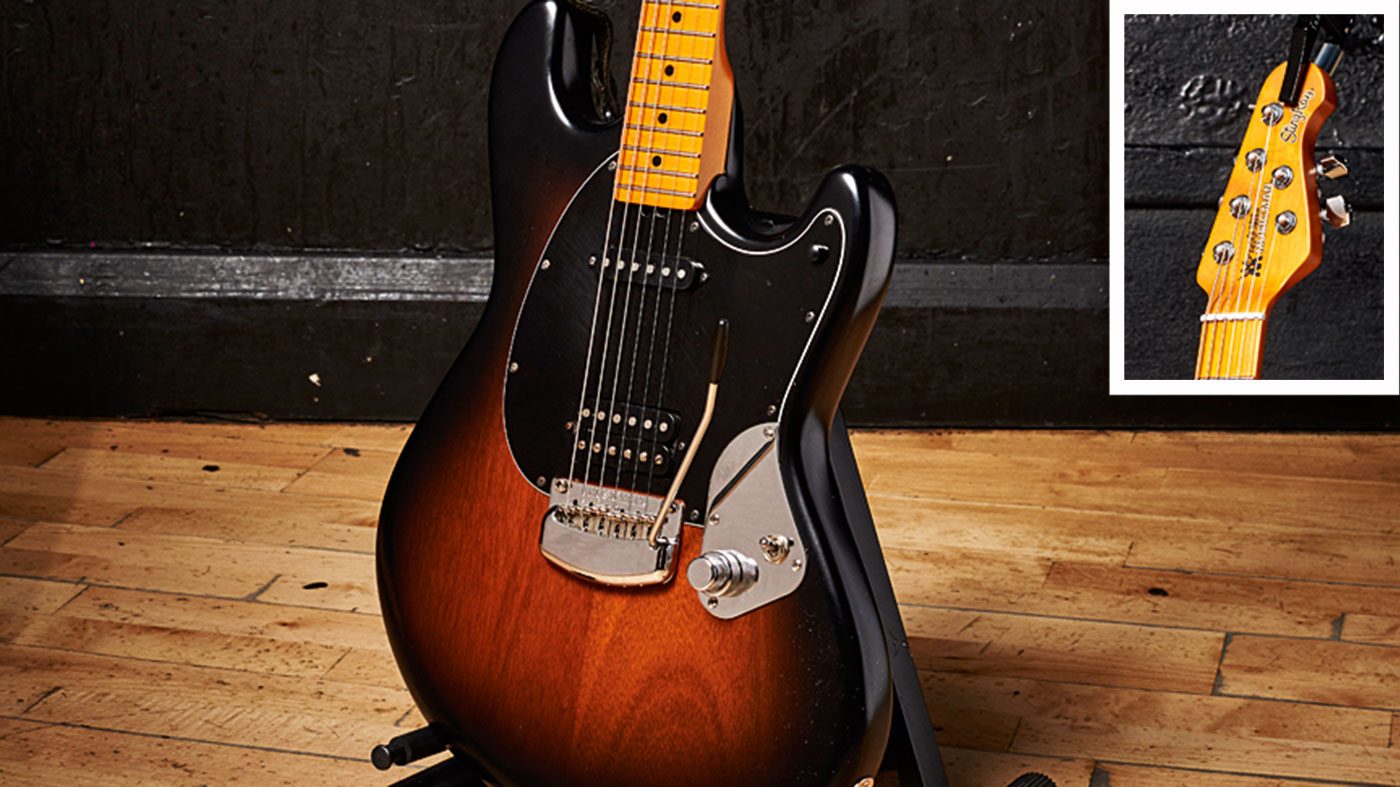
Ernie Ball Music Man Inspired By StingRay Guitar
Dustin: “The coolest thing about it is a mode where if you press a button, it makes the pickups run to separate outputs. For me, I do two separate inputs into the Line 6 Helix, and that allows me to control what pickup is used or a blend of the pickups with the settings on my Helix.
“On tour, I have one that’s set in D standard, and one that’s in baritone, in B standard. And there’s a backup of each, because they have different string gauges. These are the only electric guitars I own now. I try not to be sentimental about guitars, because otherwise I’d have too many!”

Gibson ’76 Les Paul Deluxe
Teppei: “I’ve had that guitar forever, actually. I got it and I threw P-90s in it right away, to see if I’d like it. It was cool, but for whatever reason, I didn’t really end up using it that much. I dug it out, and I started thinking about putting mini-humbuckers back in; I liked the idea of something that’s a little more articulate than a standard humbucker. I got on the phone with Lollar right away, and I was like, ‘I need a pair of your mini-humbuckers, now!’ And so those came a couple of days before we left for the tour, and I got those in there. I actually haven’t even played them through my real rig yet!”
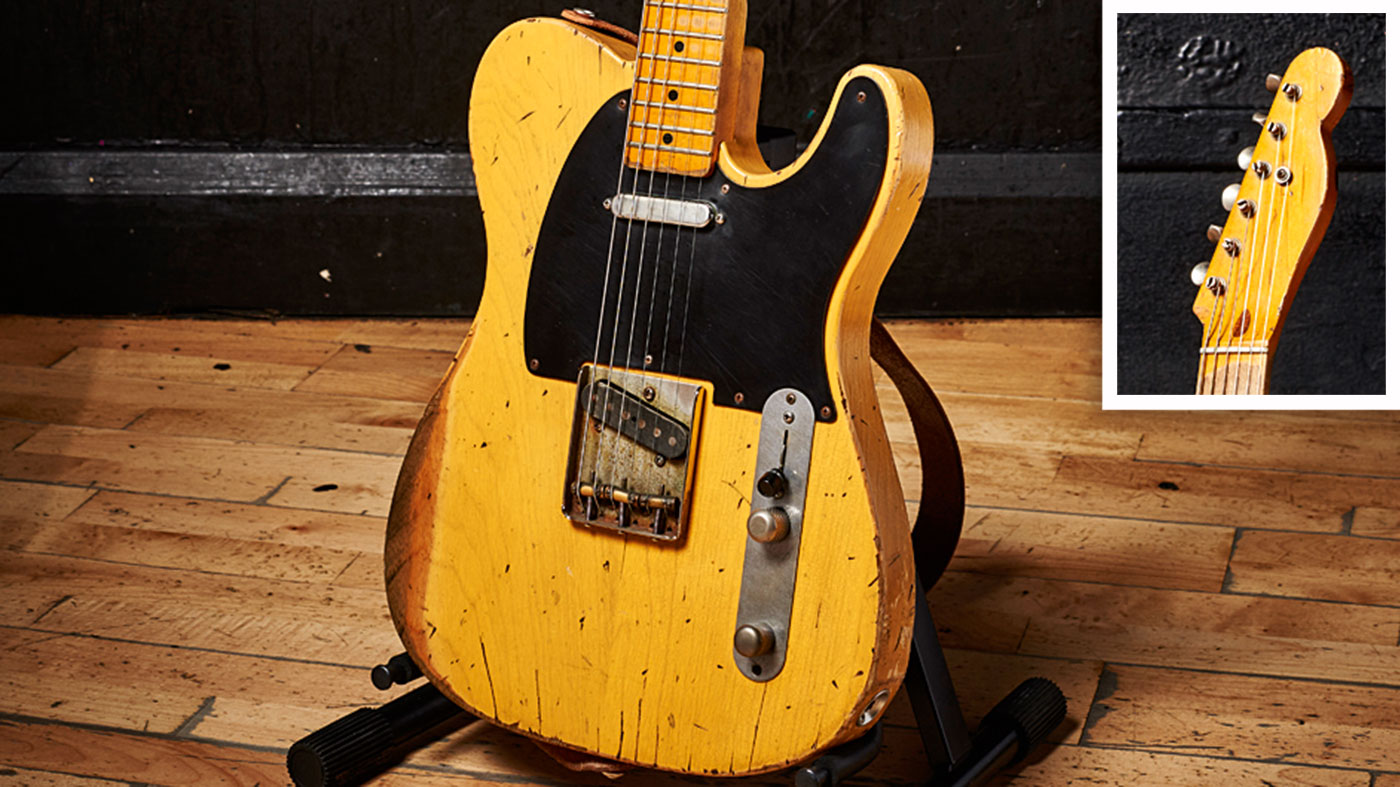
Nash T-type
Teppei: “I got it back in 2003 or 2004, and since then, the specs have kind of erased out of my mind. [laughs] It depends on the set, but usually it ends up being split pretty evenly between the Baritone, Les Paul and Tele.”
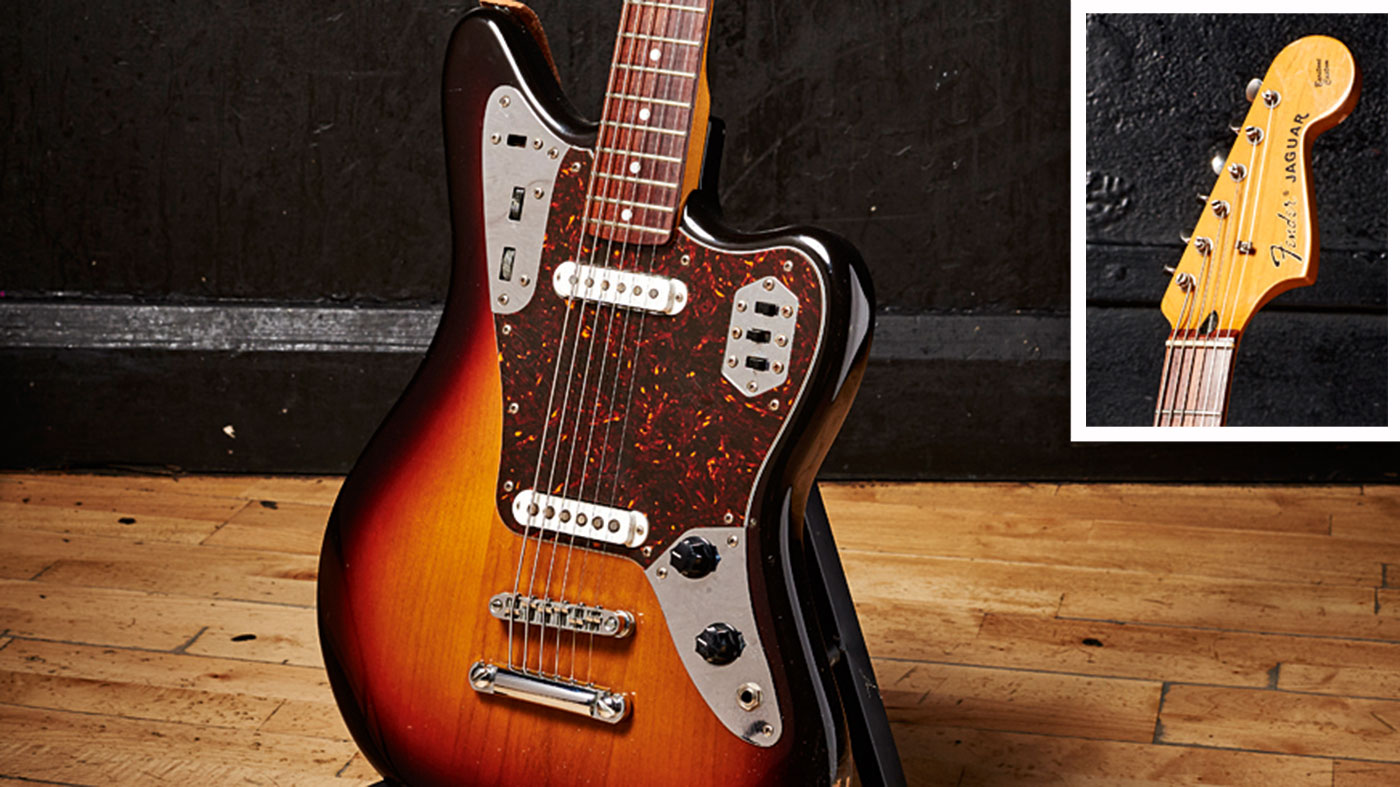
Fender Baritone Jaguar
Teppei: “I play that on Yellow Belly, Death From Above, Firebreather… The set that we have now, I just have a block of baritone, and that’s it; I’m not switching it. Actually, except [set closer] The Earth Will Shake, which actually wasn’t written on a baritone, but it transfers over nicely.”
Dustin: “We used to have a separate tuning for drop A, which was standard D with a low A, and we used it for, like, two things.”
Teppei: “It actually works really nicely. Because you take a baritone and you just drop it to A, and it’s just like having a drop tuning. And all the open strings and everything work well.”
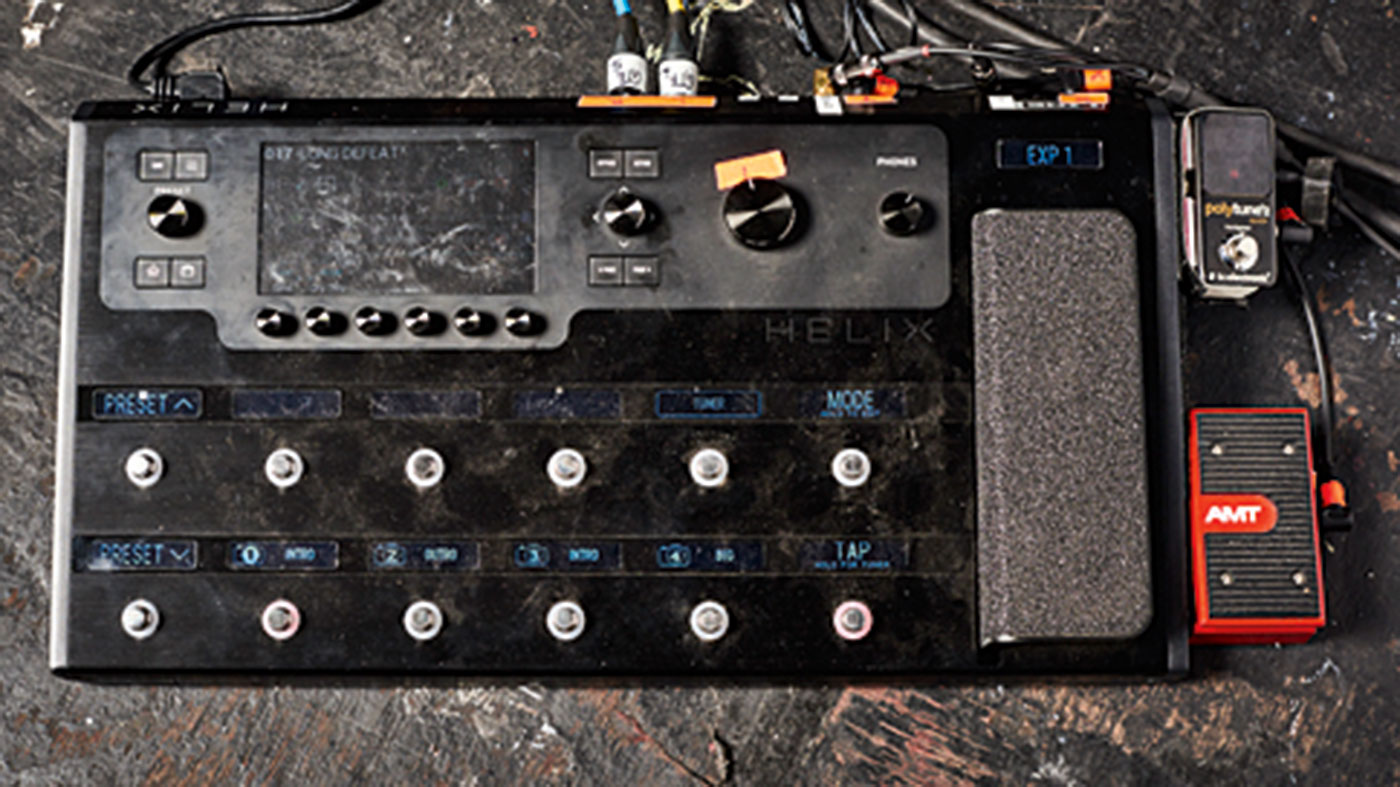
Line 6 Helix, AMT EX-50 Mini Expression & TC Electronic PolyTune
Dustin: “On the Helix, I have a delay and a ’verb and a compressor, so whenever I want to build a pad, I have a dedicated mini expression pedal that swells all of those on, so I can hang a chord. And then I have an external tuner, so that I can keep the pads going [while tuning].”
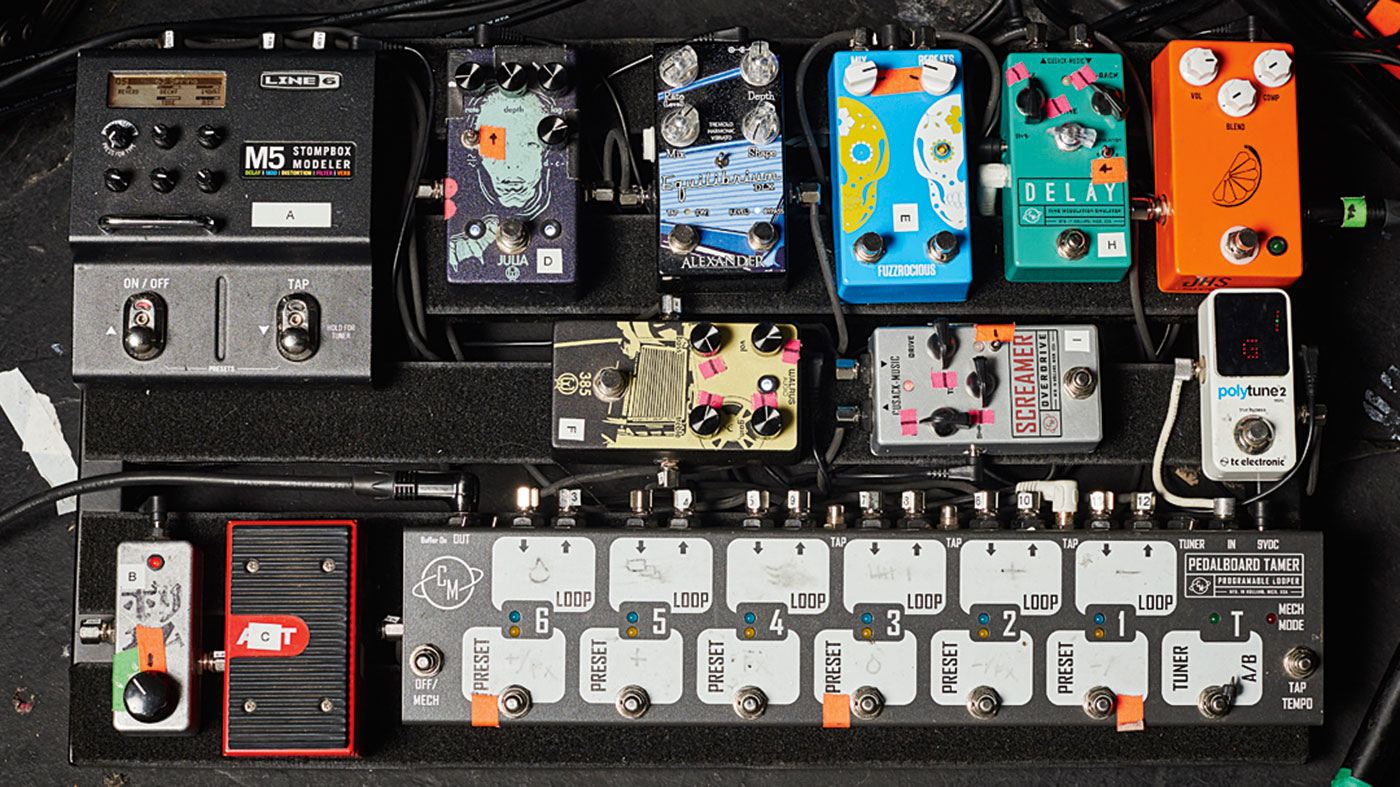
Teppei's pedalboard
Walrus Audio 385 & Cusack Screamer
Teppei: “That new Walrus 385 is what I use mostly. It’s got an interesting colour to it, and a little more character than the Tube Screamer-type overdrive. I use the Cusack Screamer for stuff that’s heavier-sounding.”
Line 6 M5
Teppei: “It’s the more speciality stuff that I use - there’s the auto-volume or auto-swell delay that we use in a few spots, and the parked wah effect for The Artist In The Ambulance.”
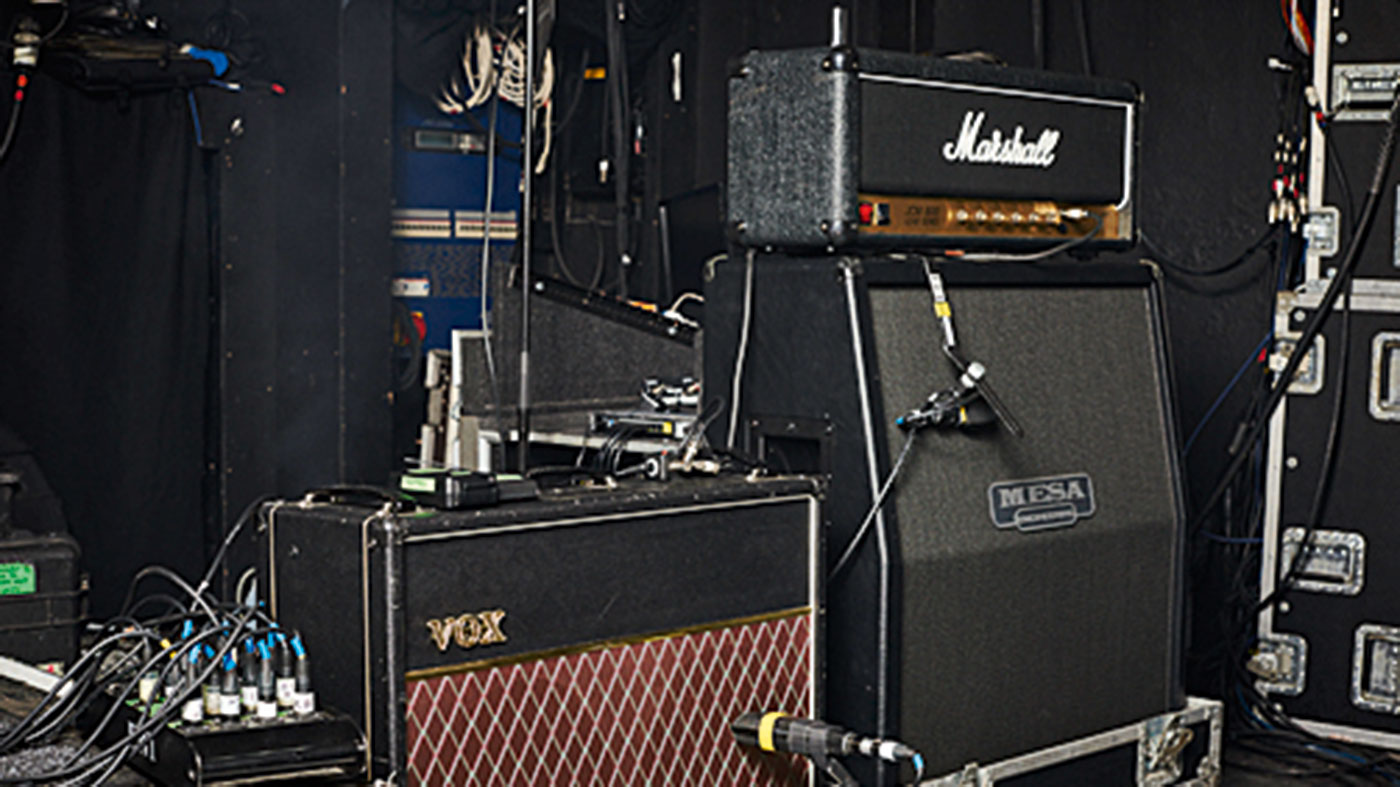
Vox AC30 & Marshall JCM800
Teppei: “Both amps are always on. The AC30’s what I’m hearing, and then our front-of-house guy likes to blend the sounds, just depending on the song.”
Help from Helix
Are there any standout guitar moments for you on this album?
Teppei: “Just Breathe has some of my favourite guitar work on the record. All the guitar and bass parts sort of weave together to make this intricate swirly kind of feel. It’s super-busy, but it all works somehow.”
Dustin: “Actually, a lot of that song was built out of little, quick guitar bits or demos, or even voice demos of me mouth-guitaring stuff and then telling Teppei to figure it out, because I was working on something else. I was like, ‘Hey, I think this is cool. Will you turn it into a real song?’ And he would try to figure out whatever I’d been singing.”
Do you often work that way?
Dustin: “I mean, I’m always making these little demos when an idea strikes, but sometimes you’re just sitting there with an electric guitar not plugged in, you’re trying to record on your phone and later, it’s hard to figure out what you were actually doing. Sometimes, at the end of one of those recordings, I’ll be like, ‘Hey, your fingers are on this fret.’ Sometimes, it’s hard to translate!”
Dustin, since we last spoke, the Line 6 Helix has pretty much replaced your entire rig…
Dustin: “I really, really like the Helix. I’ve used a lot of Line 6 stuff in the past, and always found it useful, but always yearned to find something else, too, whether it was tone-wise or the interface or something, but at this point, I really am not looking for something else: the sounds are fantastic, especially the amps; they’ve really stepped it up on the dirt box tones, too.
“I used a Fender-style model, which fits the vibe of what I was using before when I had a Fender Vibrolux with the Bassman circuit in it. I had it set pretty clean, and I’d drive it with the Minotaur, which is the Klon pedal on there. And that’s the foundation of almost all my sounds. All the parts I played on the record were with the Helix, and with my new Ernie Ball Music Man guitars [see Thrice As Nice, above]. I didn’t have any reservations about, ‘Oh man, well, if we’re recording, I should use a real amp.’ It just sounds great, and it’s super-easy to dial things in.”

Singles club
Although you’re a long-time dual-humbucker user, you spec’d a single coil in the neck for your Music Man; what prompted that?
Dustin: “I generally feel like, unless I’m using a pedal to cut out certain frequencies, if I have the amps set for the bridge humbucker, then the neck humbucker feels overly woofy or dark.”
Teppei: “Neck humbuckers never sound good!”
I used my Nash T-model, Baritone Jag, and the unexpected hero of the record, a Fender American Professional Jazzmaster
Teppei Teranishi
Dustin: “Well, they can, if you set the amp up for it, they can sound really cool. But [switching between the two] never really works. I tried basically all the different single coils they had at Ernie Ball, but this is their kind of Strat-style, and I find it to be super-useful. It blends well when I’m using the Helix to meld the two. I feel like they’d get in the way a bit more if it was two humbuckers. I find that, even when I’m not using my stereo setup, it’s just more useful to have a brighter sound there, since it’s darkening anyway based on what’s happening with my guitar.”
Teppei, did you have any gear revelations in the studio?
Teppei: “Surprisingly, I only played single-coil guitars. I used my Nash T-model, Baritone Jag, and the unexpected hero of the record, a Fender American Professional Jazzmaster - that I had planned on putting humbuckers in but never got around to - which probably showed up more on the record than any other guitar.
“As for amps, my go-to has always been a Vox AC30, and I run either a Supro Dual-Tone going through the combo’s speaker or a Bassman 2x12 loaded with Vintage 30s, or a Marshall JMP/Marshall 4x12 alongside the Vox.
“Effects-wise, we have a slew of pedals from our buddies at Old Blood Noise, Fuzzrocious and Walrus that were used throughout. Some of my standouts were the Fuzzrocious Afterlife V2 for reverb, Walrus Audio 385 for overdrive and Old Blood Noise Endeavors Dark Star for spacey wackiness. We were able to get some great atmospheric pad-ish stuff out of the Helix as well.”
Dustin: “We used three of the new reverbs Line 6 just put out, which are really great. There’s a new Roland Space Echo [model] on there, and I think that might be the one at the end of Beyond The Pines. I did mean to save my settings from the record, but I ended up erasing some of that stuff. I’ll find them again!”
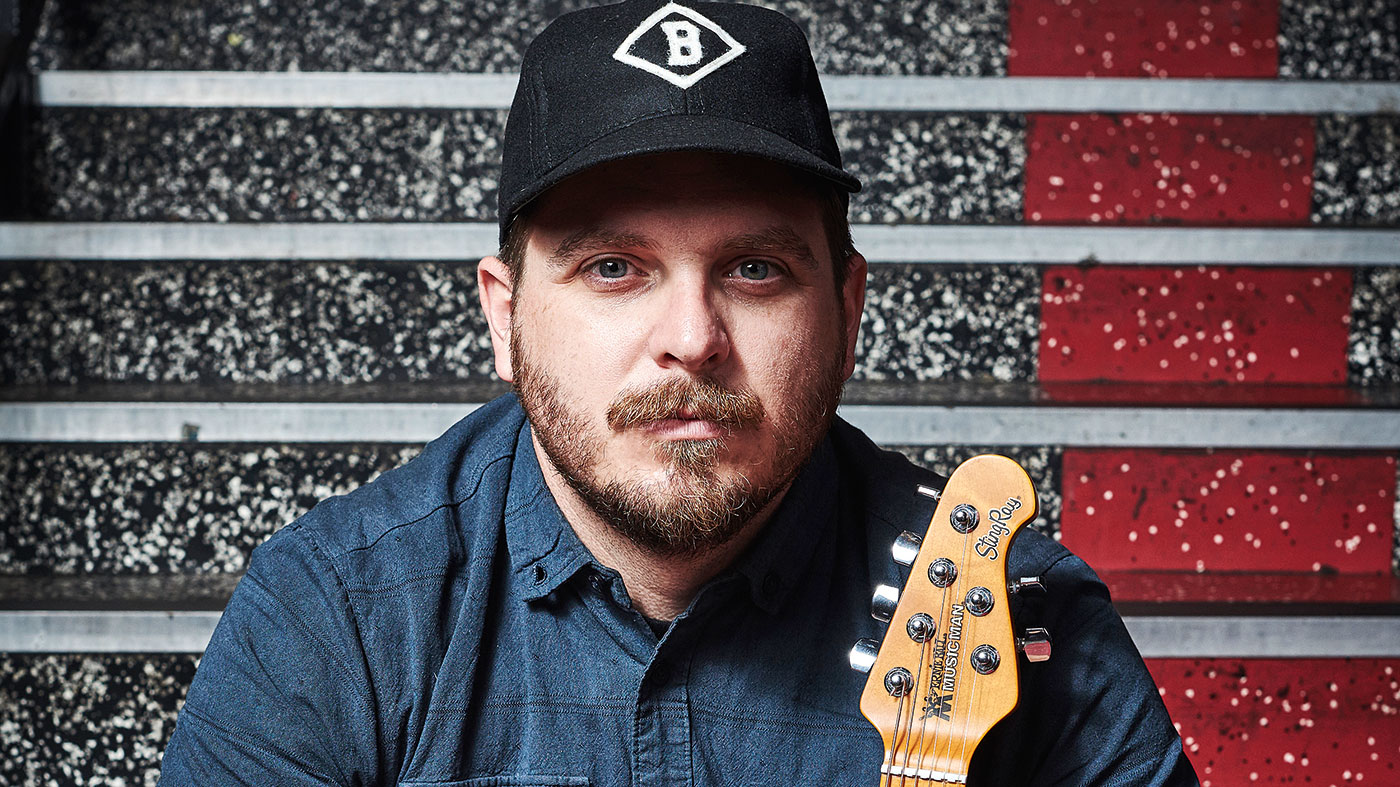
Effects evolution
You’ve both broadened your use of effects throughout your career; what first got you into pedals?
Dustin: “I was really anti-effects in the beginning, for no particularly good reason. The first pedal that I really made a lot of use of was the Line 6 DL4. The delays on there were a lot of fun, and opened up some new sonic horizons. We made a lot of use of the auto-swell delay and the sweep delay on the early stuff.
“Though, I will say that our very first show we ever played, I think all three of us [Dustin, Teppei and Ed] were plugged into [Boss] Metal Zones. That didn’t last long - we went on a quest to find decent amps!”
2018 marks 20 years since Thrice formed; what are the biggest guitar lessons you’ve learned in that time?
A lot of times people are hung up on what gear they’re playing, but learn to actually play your instrument, and that can make the most difference
Teppei Teranishi
Teppei: “I firmly believe less is more. When we first started, we were 17 and wanted to fit as many notes as possible in and leave the smallest amount of space. But we’re minimalists nowadays for the most part. Also, as far as tone, there’s a lot in the way you play. A lot of times people are hung up on what gear they’re playing, but learn to actually play your instrument, and that can make the most difference.”
Dustin: “I would encourage people to pursue tonal stuff out of trying to make something happen that you hear in your head, not out of, ‘I need to have this to sound like this’; you could sound roughly the same with 80 different pieces of gear, and if you know what you’re doing, you’re gonna get there.
“When I first started, I definitely didn’t know this, but the gear you have can inspire you to write new things that you wouldn’t otherwise. Whether that’s a guitar, or whether that’s some new pedal. I would pursue gear that opens those possibilities, too. Something that just excites you when you play, that’s gonna make you write cool stuff.”
Palms is out now via Epitaph.
Mike has been Editor-in-Chief of GuitarWorld.com since 2019, and an offset fiend and recovering pedal addict for far longer. He has a master's degree in journalism from Cardiff University, and 15 years' experience writing and editing for guitar publications including MusicRadar, Total Guitar and Guitarist, as well as 20 years of recording and live experience in original and function bands. During his career, he has interviewed the likes of John Frusciante, Chris Cornell, Tom Morello, Matt Bellamy, Kirk Hammett, Jerry Cantrell, Joe Satriani, Tom DeLonge, Radiohead's Ed O'Brien, Polyphia, Tosin Abasi, Yvette Young and many more. His writing also appears in the The Cambridge Companion to the Electric Guitar. In his free time, you'll find him making progressive instrumental rock as Maebe.


